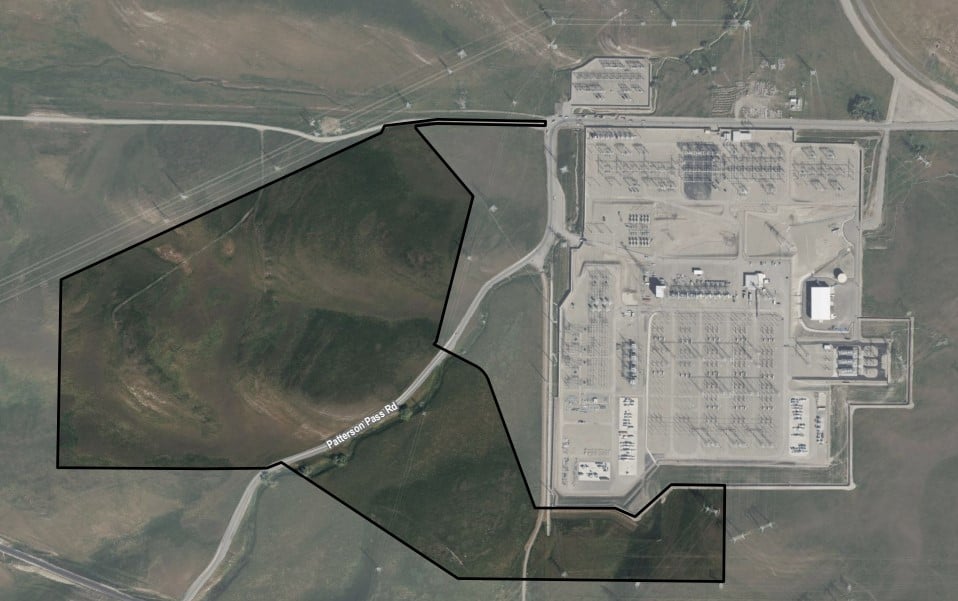Capstone, Eurowind JV seeks approval for 3.2GWh long-duration BESS in California

The developers are currently seeking permission from the California Energy Commission (CEC) to construct Potentia-Viridi. The California regulator has yet to commence its review of the project as it currently deems the JV’s application incomplete and has requested further information to begin its assessment.
8-hour long-duration energy storage (LDES)
The CEC application for the Potentia-Viridi BESS project was submitted by Levy Alameda, LLC, a subsidiary of Obra Maestra Renewables, LLC – a holding company jointly owned by the US development arms of Capstone and Eurowind, dedicated to the development of projects through the JV.
The Potentia-Viridi BESS will be located on an 85-acre site on the outskirts of Tracy in Alameda County, near several operational wind farms including the Golden Hills Wind facility that was repowered by Juno-Beach, Florida-based NextEra Energy Resources (NEER) in 2017.
Although technology has yet to be selected for the project, initial designs have been based around the use of containerised and modular lithium iron phosphate (LFP) batteries with an output and capacity of up to 400MW and 3,200MWh, respectively.
Construction is expected to commence at the beginning of 2026 with commercial operations scheduled for the second quarter of 2028.
Wind and solar PV co-location potential at grid connection point
Interconnection to the California Independent System Operator (CAISO)-owned grid will be via Pacific Gas & Electric’s (PG&E’s) Tesla substation, which is located adjacent to the east of the Potentia-Viridi BESS project.
The Capstone and Eurowind JV has already secured a CAISO interconnection agreement for the project (queue number 1702) covering 400MW of BESS capacity that was processed as part of the system operator’s cluster 13 study process. Interestingly, the agreement also covers 400MW of both solar and wind generation at the same point of interconnection, potentially paving the way for a future co-located wind/solar development.
Although not commonplace, developers have successfully co-located wind and solar facilities with the same BESS in the past, with NEER and utility Portland General Electric (PGE) claiming to be the first to have done so in North America, as reported in Energy-Storage.news.
Brought online in 2022, the Wheatridge Renewable Energy facility, located in Morrow County, Oregon, comprises 300MW of wind generation, 50MW of solar generation with a 30MW/120MWh BESS.
Permitting options in the state of California
The JV is seeking approval to construct and operate the project through the CEC, as permitted under Assembly Bill (AB) 205. This was signed into law by California Governor Gavin Newsom in June 2022, increasing the California regulator’s jurisdiction to also cover BESS projects over 200MWh in size.
Although this bill introduced an alternative permitting pathway for developers in California, the majority are still opting for approval through local authorities. This includes Scottsdale, Arizona-based Arevon, which was recently given the greenlight to construct a 200MW/800MWh BESS in Los Angeles by the City of Carson through the California Environmental Equality Act (CEQA) review process.
Engie is an example of another developer seeking regulatory approval from the CEC to construct a standalone BESS. However, the French multinational energy company submitted an application with the California regulator after it was denied a rezoning request at the local level from the City of San Juan Capistrano in Riverside County, as recently featured in Energy-Storage.news.
As of 7 October 2024, the CEC deemed Engie’s application for its Compass Energy Storage project incomplete and has issued the developer with a “Determination of Incomplete Application and Request for Information”, outlining what further information is required for the California regulator to commence its review of the project.
Capstone Infrastructure in Canada and the US
Capstone Infrastructure is publicly listed on the Toronto Stock Exchange and claims to have an early-stage development portfolio exceeding 2.45GW located across Canada and the US made up of solar, wind and storage assets.
Although the IPP has historically focused on solar and wind developments in North America, Capstone prepared several project proposals for the Independent Electricity System Operator’s (IESO) Long-Term 1 Request for Proposals (LT1 RFP) procurement in Ontario.
This included a standalone 350MW BESS known as the Four Railroads project located in the Municipality of Lakeshore, approximately 1.5 km west of Tilbury. However, this project wasn’t selected by the Ontario system operator. For details on the projects which were selected, see this article from Energy-Storage.news.